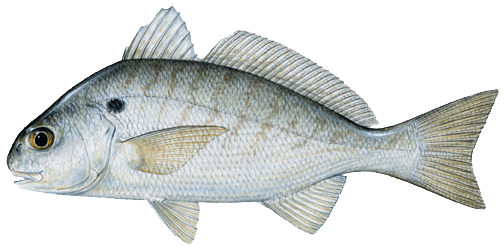So, I was finally able to get out, at least for a quick time of suds in the surf with our grandchildren last week.
Some bloodworms and fishbites on a sabiki rig produced some nice sized Spot (aka Lafayette)
Spot Leiostomus xanthurus
Spot are a short-lived baitfish that are also known as spot croaker or flat croaker. Spot are part of the drum family and the males can make a drumming noise with their swim bladder. They are a schooling fish that can tolerate a wide range of temperature and salinity, making them common to a variety of habitats in large numbers.
Spot are commercially and recreationally fished for as bait using gill nets, cast nets and haul seines12. It is not uncommon for fishermen to use spot as live bait. They can do this by hooking the fish using a Sabiki rig. These rigs are multi-lure rigs that are made to be able to cast into a school of baitfish. Spot are considered good to eat and are commonly harvested as food. Commercially harvested spot are also used by pet food processers.
Spot feed on benthic invertebrates, including copepods and polychaetes. Similar to previously discussed baitfish, spot turn these primary producers into sources of energy for species higher in the food chain. Adults are fed on by striped bass, sharks, seatrout, bluefish, mackerels, gars and flounder.







